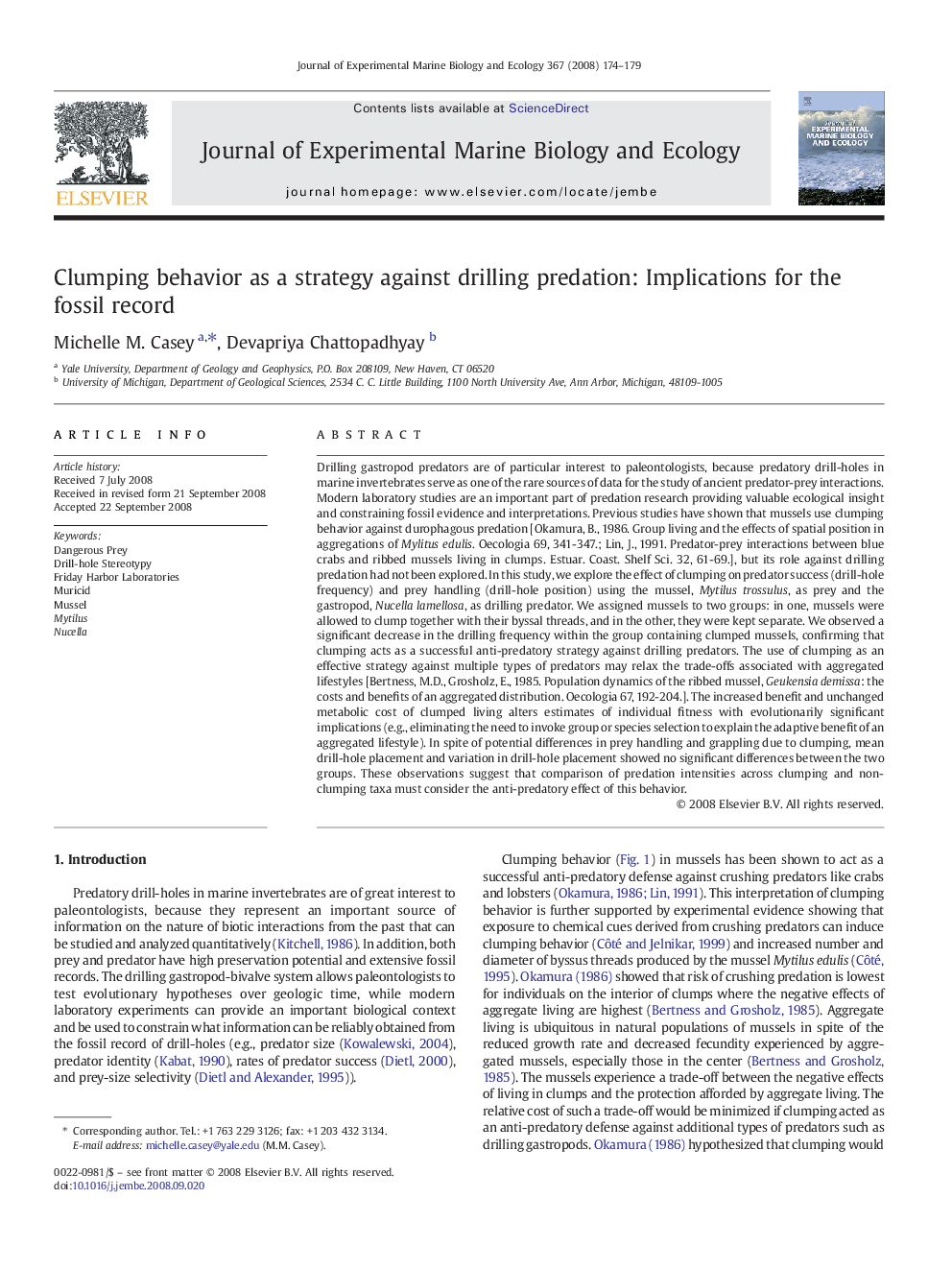| Article ID | Journal | Published Year | Pages | File Type |
|---|---|---|---|---|
| 4397130 | Journal of Experimental Marine Biology and Ecology | 2008 | 6 Pages |
Abstract
Drilling gastropod predators are of particular interest to paleontologists, because predatory drill-holes in marine invertebrates serve as one of the rare sources of data for the study of ancient predator-prey interactions. Modern laboratory studies are an important part of predation research providing valuable ecological insight and constraining fossil evidence and interpretations. Previous studies have shown that mussels use clumping behavior against durophagous predation [Okamura, B., 1986. Group living and the effects of spatial position in aggregations of Mylitus edulis. Oecologia 69, 341-347.; Lin, J., 1991. Predator-prey interactions between blue crabs and ribbed mussels living in clumps. Estuar. Coast. Shelf Sci. 32, 61-69.], but its role against drilling predation had not been explored. In this study, we explore the effect of clumping on predator success (drill-hole frequency) and prey handling (drill-hole position) using the mussel, Mytilus trossulus, as prey and the gastropod, Nucella lamellosa, as drilling predator. We assigned mussels to two groups: in one, mussels were allowed to clump together with their byssal threads, and in the other, they were kept separate. We observed a significant decrease in the drilling frequency within the group containing clumped mussels, confirming that clumping acts as a successful anti-predatory strategy against drilling predators. The use of clumping as an effective strategy against multiple types of predators may relax the trade-offs associated with aggregated lifestyles [Bertness, M.D., Grosholz, E., 1985. Population dynamics of the ribbed mussel, Geukensia demissa: the costs and benefits of an aggregated distribution. Oecologia 67, 192-204.]. The increased benefit and unchanged metabolic cost of clumped living alters estimates of individual fitness with evolutionarily significant implications (e.g., eliminating the need to invoke group or species selection to explain the adaptive benefit of an aggregated lifestyle). In spite of potential differences in prey handling and grappling due to clumping, mean drill-hole placement and variation in drill-hole placement showed no significant differences between the two groups. These observations suggest that comparison of predation intensities across clumping and non-clumping taxa must consider the anti-predatory effect of this behavior.
Related Topics
Life Sciences
Agricultural and Biological Sciences
Aquatic Science
Authors
Michelle M. Casey, Devapriya Chattopadhyay,
